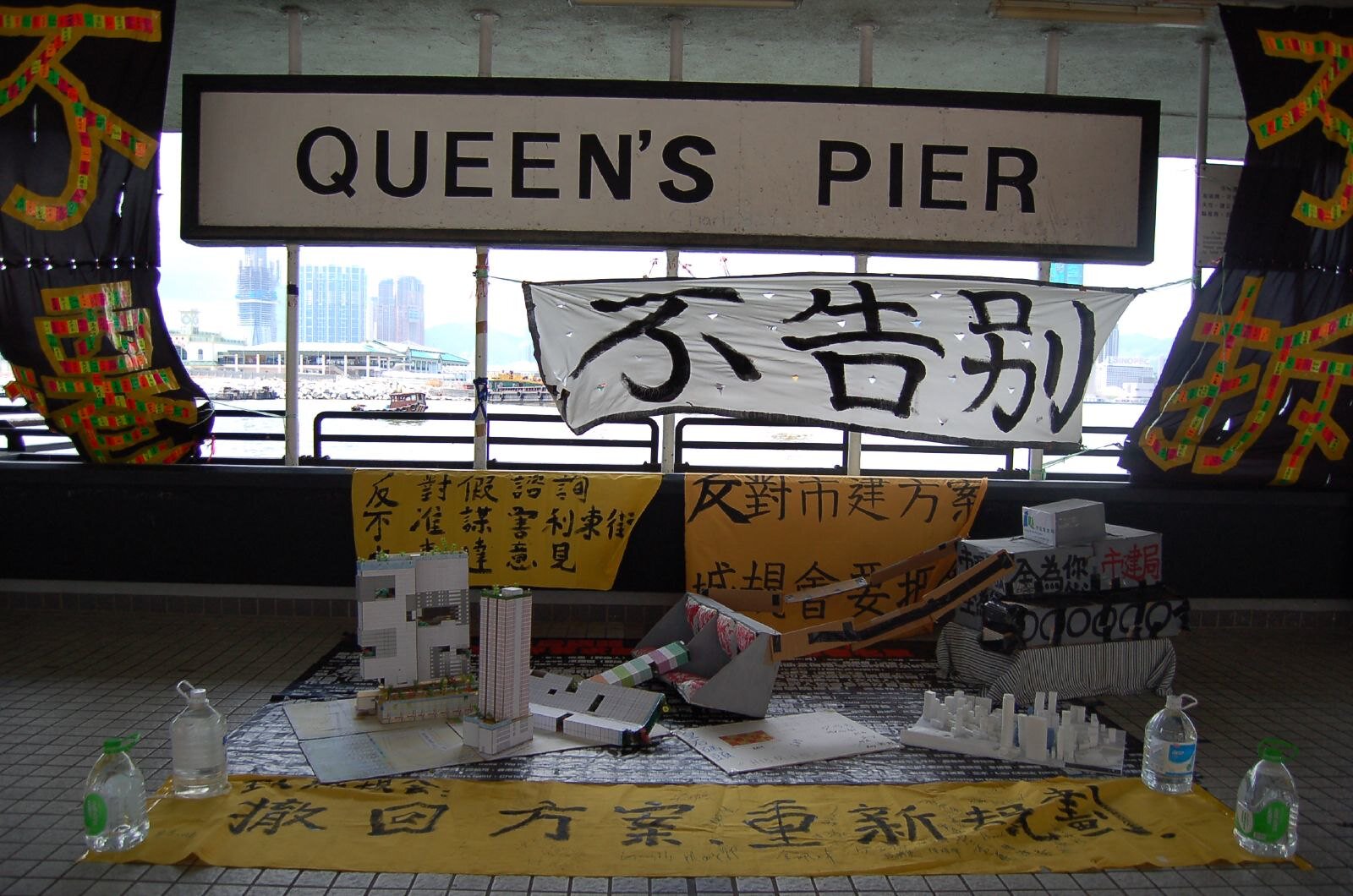Queen's Pier
Emergence of Contestation: 2007
The Queen's Pier in Hong Kong can function as a case study of the degree to which (formerly) colonial spaces continue to shape people's relationships to their colonial past and their own identitities even in the post-colonial period, through their spatial design intertwined with colonial education which generate lasting control systems impacting both body and mind.
Tracing the inveterate (post-)colonial controls: Queen's Pier in Hong Kong and the 'Cape No. 7' in Hengchun, Taiwan - Liza Wing Man Kam
Mimizuka (Ear Mound)
Emergence of Contestation: 1597
The Mimizuka memorial can serve as an example of a transformative mnemonic site, where meaning and memory of conflict is continuously reshaped through time. The representations of the monument and the collective memories associated with it shift between communities, generating narratives ranging from reproach to remembrance, and even reconciliation, all the while fueling discussion on how memorialisation is handled in today's society.
Kyoto's Mimizuka: Transformation and Contestation Across Four Centuries - Daniel Milne
Jiabiangou Labor Camp Sites
Emergence of Contestation: 2013, 2014
Jiabiangou Labor Camp (Chinese: 夹边沟; pinyin: Jiābiāngōu) is a former farm labor camp (laogai) located in Jiuquan in the northwestern desert region of Gansu Province. The camp was in use during the Anti-Rightist Campaign in the years from 1957 to 1961. During its operation, it held approximately 3,000 political prisoners, of whom about 2,500 died at Jiabianguo, mostly of starvation. Remains of the camp, including the graveyards, are unmaintained and heavily guarded to prevent people from visiting. In November 2013, a new monument erected by families and social workers was quickly destroyed by local authorities. Ai Xiaoming, a professor of Sun Yat-sen University, was briefly detained before released and prevented from photographing the site in May 2014.
Hengchun
Emergence of Contestation: 1940s
Hengchun in Taiwan can function as a case study of the degree to which (formerly) colonial spaces continue to shape people's relationships to their colonial past and their own identitities even in the post-colonial period, through their spatial design intertwined with colonial education which generate lasting control systems impacting both body and mind.
Tracing the inveterate (post-)colonial controls: Queen's Pier in Hong Kong and the 'Cape No. 7' in Hengchun, Taiwan - Liza Wing Man Kam
Comfort Women Statue (Seoul)
Emergence of Contestation: 1991, 2011
The Statue of Peace serves as a memorial to young Korean women who became victims of the Japanese wartime military prostitution system. The physical placement of the Statue is Seoul opposite the Japanese embassy was highly symbolic of the victims' waiting for a full and formal apology. However, its reach and the political pressure it could exert were amplified through digital reproduction, which ultimately allowed for a global debate to be kindled. Understanding the Statue in the context of visual politics allows for understanding its rise as a symbol of resistance.
Visualising Korea: The Politics of the Statue of Peace - David Chapman








